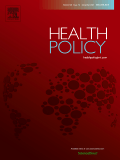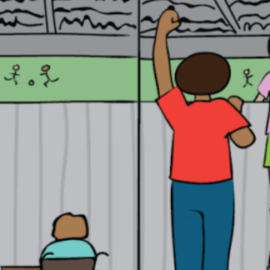
Eline Vandael, Katrien Latour, Esma Islamaj, Laura Int Panis, Milena Callies, Freek Haarhuis, Kristiaan Proesmans, Brecht Devleesschauwer, Javiera Rebolledo Gonzalez, Alice Hannecart, Romain Mahieu, Louise de Viron, Etienne De Clercq, Anne Kongs, Naïma Hammami, Jean-Marc François, Dominique Dubourg, Sarah Henz, Boudewijn Catry & Sara Dequeker
Archives of Public Health, Volume 80, Article number: 45 (2022)
Abstract
Background
In Belgium, the first COVID-19 death was reported on 10 March 2020. Nursing home (NH) residents are particularly vulnerable for COVID-19, making it essential to follow-up the spread of COVID-19 in this setting. This manuscript describes the methodology of surveillance and epidemiology of COVID-19 cases, hospitalizations and deaths in Belgian NHs.
Methods
A COVID-19 surveillance in all Belgian NHs (n = 1542) was set up by the regional health authorities and Sciensano. Aggregated data on possible/confirmed COVID-19 cases and hospitalizations and case-based data on deaths were reported by NHs at least once a week. The study period covered April–December 2020. Weekly incidence/prevalence data were calculated per 1000 residents or staff members.
Results
This surveillance has been launched within 14 days after the first COVID-19 death in Belgium. Automatic data cleaning was installed using different validation rules. More than 99% of NHs participated at least once, with a median weekly participation rate of 95%. The cumulative incidence of possible/confirmed COVID-19 cases among residents was 206/1000 in the first wave and 367/1000 in the second wave. Most NHs (82%) reported cases in both waves and 74% registered ≥10 possible/confirmed cases among residents at one point in time. In 51% of NHs, at least 10% of staff was absent due to COVID-19 at one point. Between 11 March 2020 and 3 January 2021, 11,329 COVID-19 deaths among NH residents were reported, comprising 57% of all COVID-19 deaths in Belgium in that period.
Conclusions
This surveillance was crucial in mapping COVID-19 in this vulnerable setting and guiding public health interventions, despite limitations of aggregated data and necessary changes in protocol over time. Belgian NHs were severely hit by COVID-19 with many fatal cases. The measure of not allowing visitors, implemented in the beginning of the pandemic, could not avoid the spread of SARS-CoV-2 in the NHs during the first wave. The virus was probably often introduced by staff. Once the virus was introduced, it was difficult to prevent healthcare-associated outbreaks. Although, in contrast to the first wave, personal protective equipment was available in the second wave, again a high number of cases were reported.



